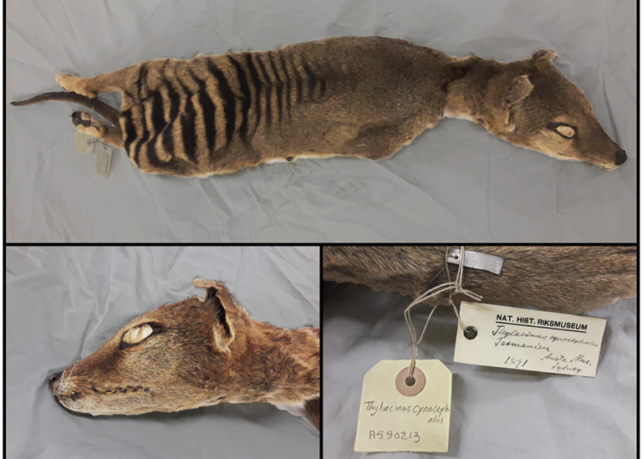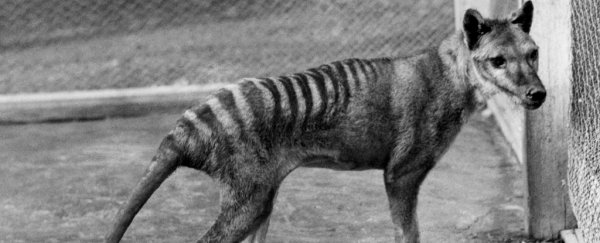The Tasmanian tiger has a long, checkered history that now includes being the first extinct animal family from which scientists have recovered RNA, the molecule that brings a species' genome to life.
With a specially modified protocol, a Swedish team extracted millions of RNA strands from the skin and muscle of a 132-year-old Tasmanian tiger, or thylacine.
Known to scientists as Thylacinus cynocephalus, the striped, carnivorous marsupial was hunted to extinction on the island of Tasmania in Australia in the 1930s.
Recovering RNA – the genetic material that translates the information encoded in DNA into proteins – from extinct animals like the thylacine could open a trove of information on gene activity long thought lost.
"The recovery of RNA expression profiles no longer existing in living cells expands the possibility of delving into the biology of extinct animals," bioinformatician Emilio Mármol-Sánchez of Stockholm University and colleagues write in their published paper.
"This is the first time that we have had a glimpse into the existence of thylacine-specific regulatory genes, such as microRNAs, that [went] extinct more than one century ago", adds molecular biologist Marc Friedländer of Stockholm University.
While reading sequences of DNA tells us what genes a species has, RNA sequences reveal which genes are actually 'switched on' and used to make proteins inside cells. But RNA is far more fragile and breaks down much, much faster than DNA, so salvaging historical samples is challenging – but not impossible.
Mármol-Sánchez and colleagues took six muscle and skin samples from a thylacine specimen that was catalogued in 1891 and shelved at the Natural History Museum in Stockholm.

The RNA recovered from the 132-year-old thylacine is not the oldest, not by a long way. In recent years, RNA has been extracted from a dog-like canid preserved in permafrost for approximately 14,300 years, and from a 5,300-year-old mummified human iceman.
The ancient wolf doesn't have a clear taxonomic rank, but its family lives on to this day, which means the thylacine is the first truly extinct animal to have its RNA recovered.
Some of its RNA shows signs of damage, which is to be expected when preserved for hundreds or thousands of years or using embalming chemicals.
The samples were also contaminated with human and possibly bacterial RNA, but the researchers were able to confirm the authenticity of the thylacine RNA sequences by matching them up to the species' genome.
In the muscle samples, they found RNA that codes for tissue-specific proteins including titin and actin, which allow muscle fibers to stretch and contract, and in the skin, RNA that codes for a structural protein called keratin.
"The transcriptional profiles closely resemble those of extant species, revealing specific anatomical features such as slow muscle fibers [in the skeletal muscle samples] or blood infiltration," Mármol-Sánchez and colleagues write.
The study team is excited by their findings, which they hope will aid ongoing efforts to resurrect the thylacine, a project that raises many ethical and technological questions.
But more than that, sequencing RNA from extinct species could present researchers with an opportunity to detect the presence of different RNA viruses through time, which might accelerate our understanding of viral evolution.
"Their presence in such old remains suggests the potential to profile the RNA virome from specimens of extant and extinct species stored in museum dry collections," Mármol-Sánchez and colleagues write.
As interesting as those investigations may be to scientists, another valid question is how a thylacine specimen from an outpost island of Australia ended up in a Swedish museum, half a world away from where it once lived.
The study has been published in Genome Research.
